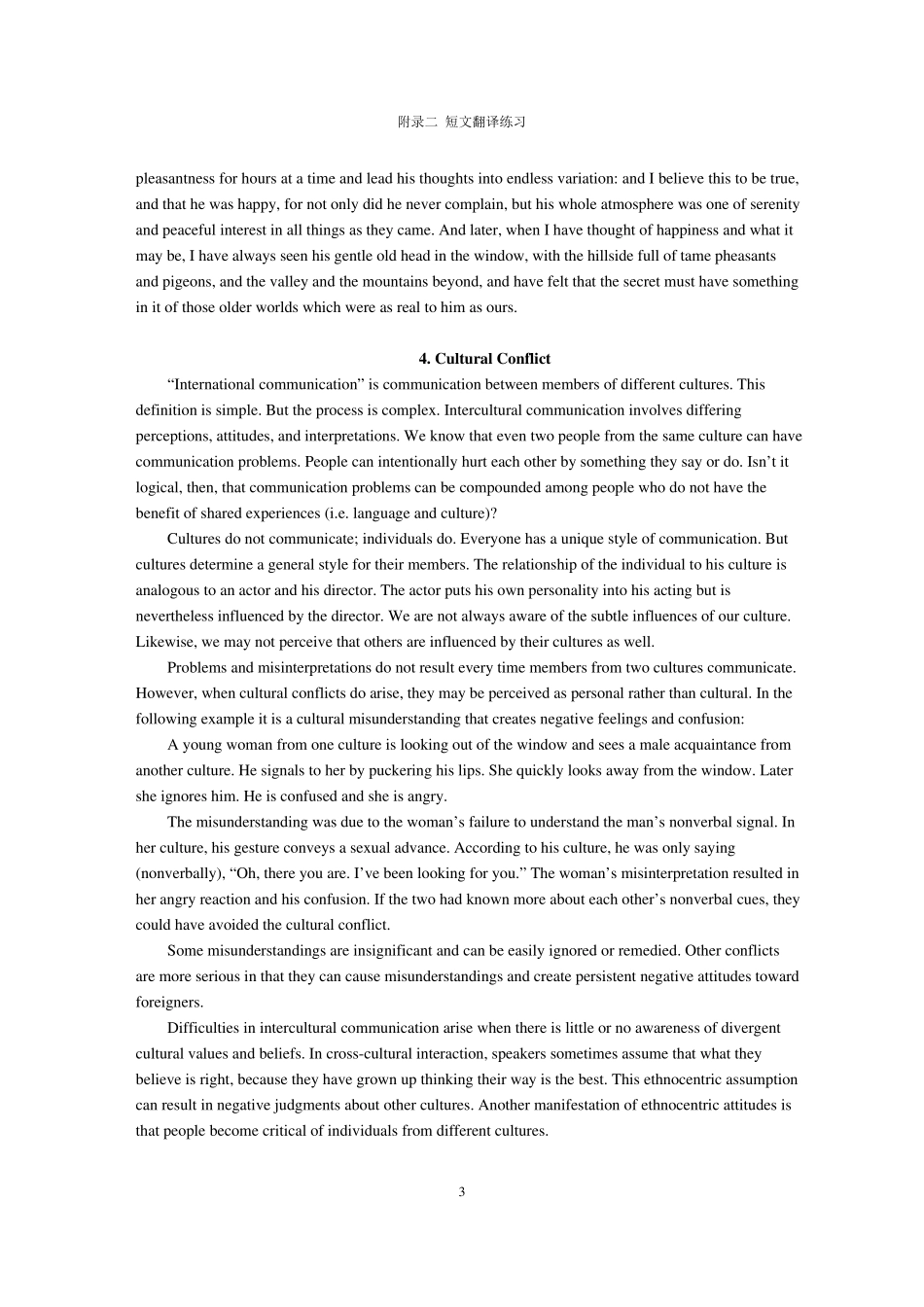附录二 短文翻译练习 1 附录二:短文翻译练习 英译汉: 1. The History of April Fools’ Day How do you think April Fools’ Day originated? Was there a historic epidemic of spring fever-tomfoolery in a tiny Finnish town in the early 1800s? Did a New Yorker in 1910 find a cockroach in his coffee cup and decide to recreate the experience for his officemate, thereby sparking a famous April 1st lawsuit? In a convincing testimonial to the saying that truth is stranger than fiction, we’ll tell you the story, or at least present the most viable theory of how April Fools’ Day came to be. Once upon a time, back in 16th-century France, before computers, people celebrated New Year’s Day on March25, the advent of spring. It was a festive time. They partied steadily until April 1. In1564, when the calendar reformed and became Gregorian(格里高利历,即阳历), King Charles IX proclaimed, perhaps pompously, that New Year’s Day should be celebrated on January 1 instead of in the spring. Diehard conservatives resisted the change (or perhaps didn’t hear about it due to the absence of e-mail) and continued to celebrate New Year’s from March 25 to April 1. During this period of spring festivity, the more flexible French mocked the rigid revelers by sending them foolish gifts and invitations to non-existent parties. The victim of an April Fools’ Day prank was called a “poisson d’avril2”, or an “April fish”, because at that time of year, the sun was leaving the zodiacal sign of Pisces(双鱼座). April Fools’ Day hit its stride in England in the 18th century, and was brought to colonial America by the English, Scottish, and French. ...... We may never learn the true origin of April Fools Day. However,...


